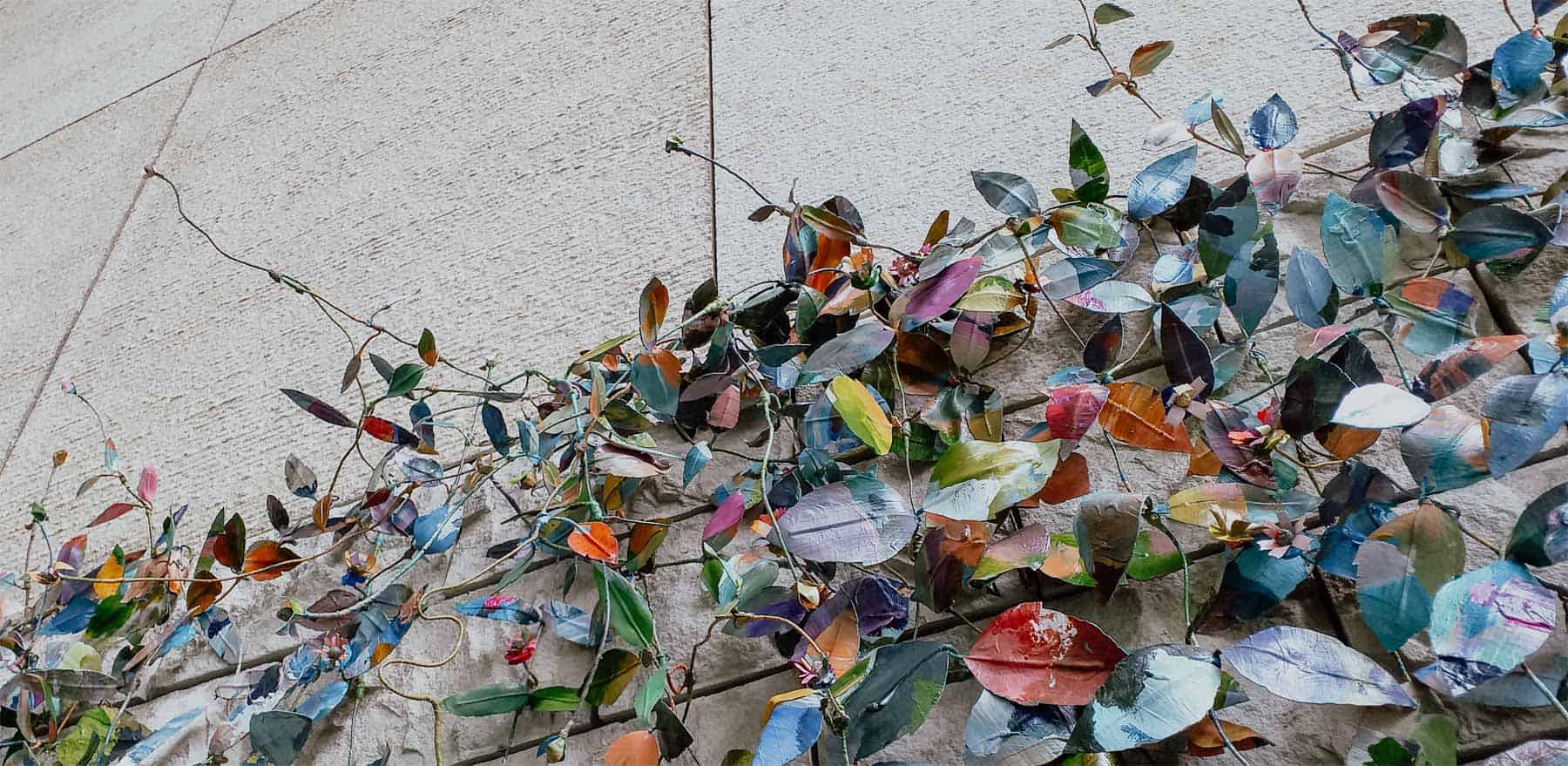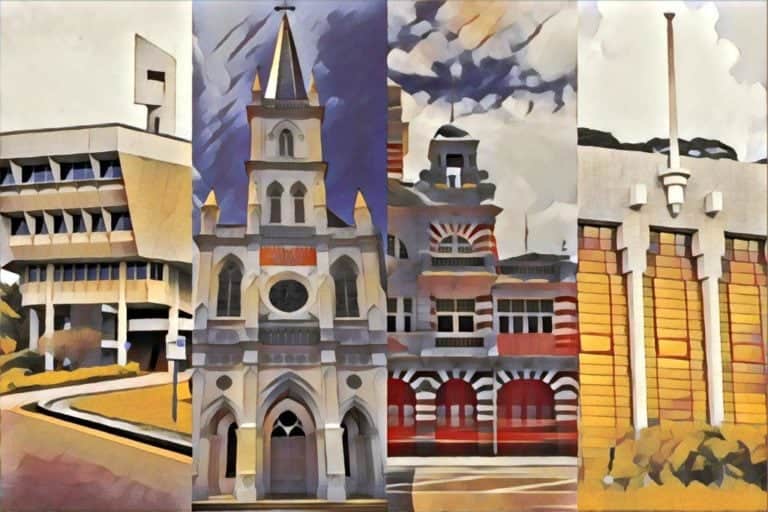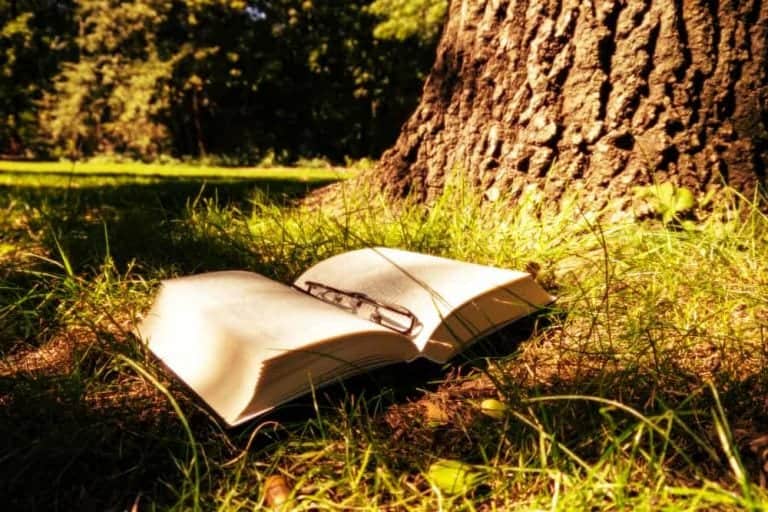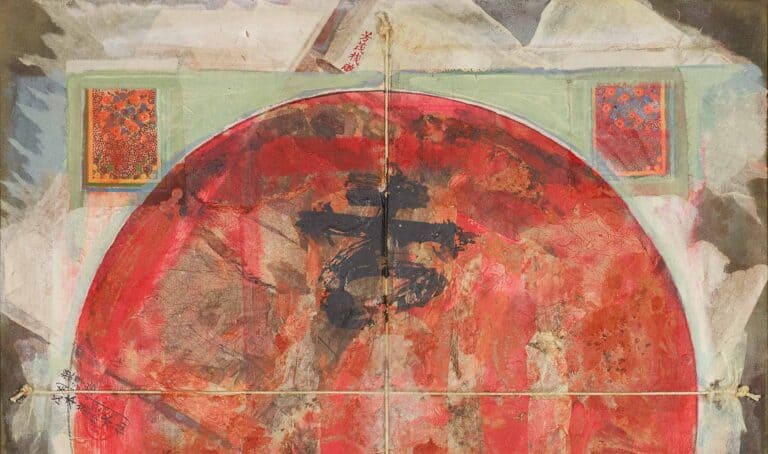This article by Aw Ker Wey tied for second place in the Short Form Lucha Libre 2020, a writing contest jointly organised by Plural Art Mag, the Singapore Biennale and the International Association of Art Critics, Singapore Section (AICA SG). Heartiest congratulations, Ker Wey!
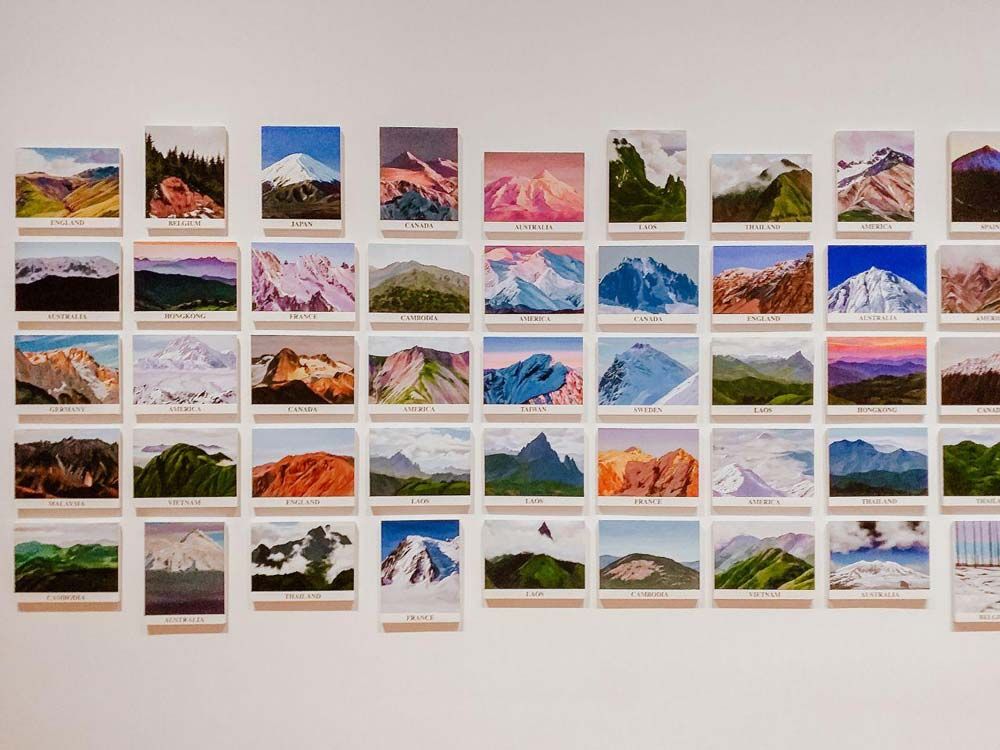
Paphonsak La-or’s work may be large, spanning across three different locations in the Singapore Biennale, but it is by no means loud. Quiet and unassuming, the audience is invited to wonder as they wander around the work, which draws us in while simultaneously eliciting a desire for more.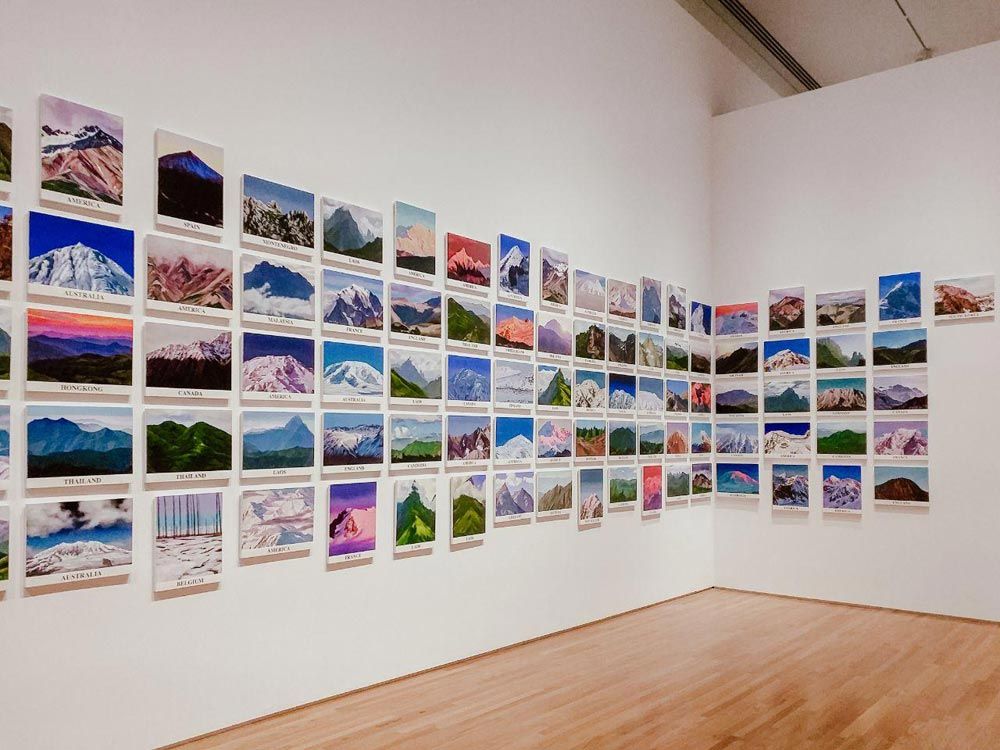
The component of Far from Home (Meeting Place) in the National Gallery Singapore greets us impressively with its sheer extent – spanning two walls are 121 paintings of sublime landscapes from countries where Southeast Asian political exiles reside. Each painting realistically depicts an upland terrain in vivid hues, with the country’s name stencilled in serif type over the broad white strip across the bottom of each canvas. It is impossible to refrain from leaning closer to canvases that draw us in with their elusiveness before stepping back once again to take the entire artwork in. Being surrounded by the work, it is almost intimate.
These landscapes were based on photographs – and while looking, I couldn’t help but be reminded of postcards. After all, the photographs in the ‘Kraibaan’, the 1907 travel journal of King Chulalongkorn of Siam, were a source of inspiration for Paphonsak. Throughout his journey, the King had sent a collection of postcards to his family, particularly of landscapes. The purpose of sending a postcard is straightforward: to show a loved one where you are, and to tell them how much you miss them while being so far away from home. With this, the allusion carries the subtext of a sort of idyllic desire.

Though the countries repeat, the elements of the landscapes vary. Without the text, however, there is no way to distinguish their location. The landscapes almost seem like they could be from the same place.
What is this sense of universality in the 121 variations of mountains against a gradient-like sky? The simple, impartial beauty in the natural landscapes tells us that these locations are merely a temporal resting place – not a newfound home. When one’s home fails to shelter them, where does one go? Refuge is never intended to be permanent. In the same manner they may look to the sky, wishing, exiles stay in these places craving to be back home, uncertain when they ever will.
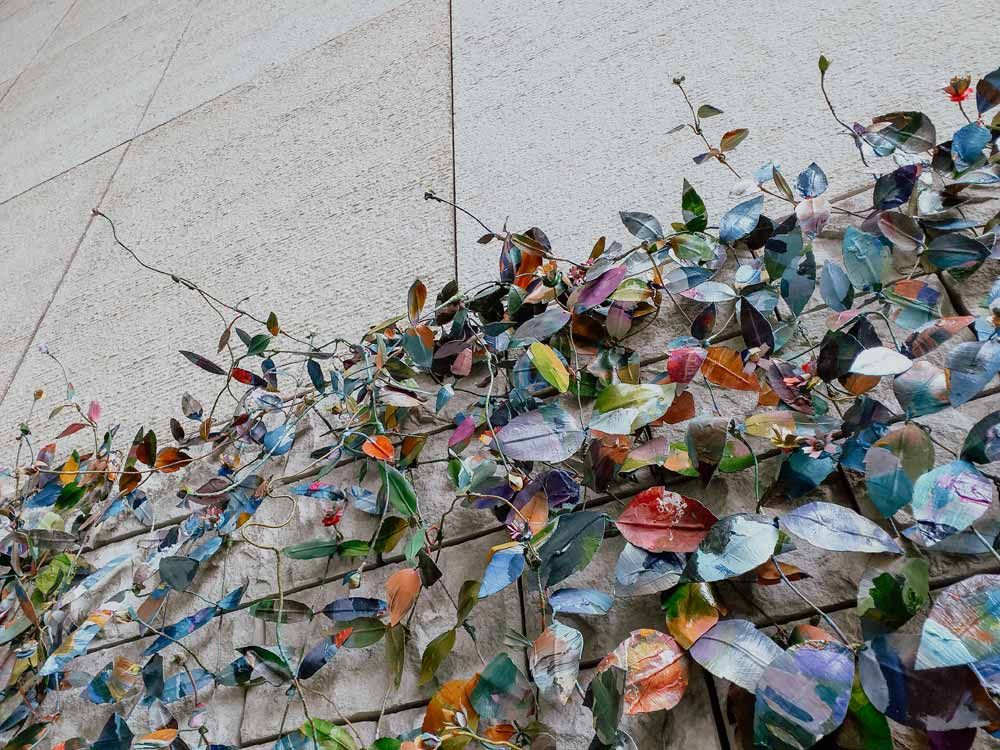
This tension is similarly reflected in the installation in the National Library plaza, in which the wires immersed in left-over paint from the paintings do not simply press close to, but stretch beyond the flatness of the wall, like flowers growing towards the sun – a wanting for something beyond reach.
But there is a gap in the representation. Who are the exiles, amongst all this?
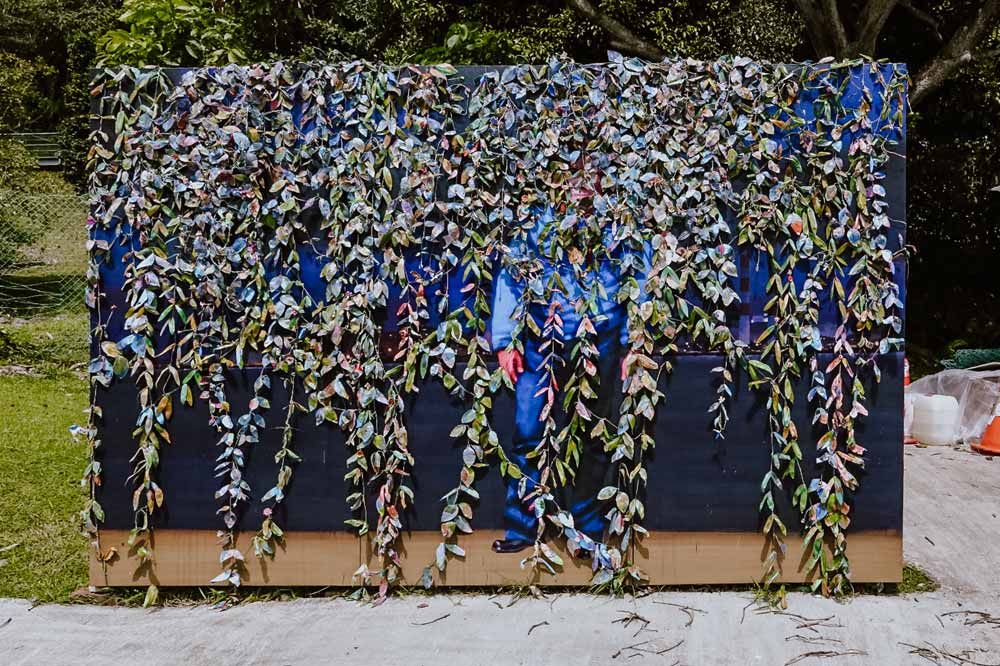
At Gillman Barracks is an outdoor painting of an ‘anonymous portrait’ – or so the write-up states. What we are seeing here is an overlay of the faces of the same 121 exiles, their features blending into each other, reduced to a single identity. Rather, is this not a complex merging of already controversial identities? Paphonsak reminds us that these exiles are human too, people who went against authority (irrationality) because they could not bear to see their country go down (due to the weakness of the human heart).
And it aches, right here: knowing that these people who so desperately try to protect their home are the ones denied access to it.
Far from Home (Meeting Place) extends from the artist’s 2017 project, Far from Home. This time, it spreads across three different locations in Singapore, perhaps referencing the diaspora of émigré across the globe. It is incomplete to view only one part as it is insufficient to define a political exile purely via their current location or the criminal actions they committed. Far from Home reminds us of these people and the sacrifices they made in the name of love for their nation. If anything can be said to be consistent across every exile’s experience, it would be their innate, insufferable yearning.
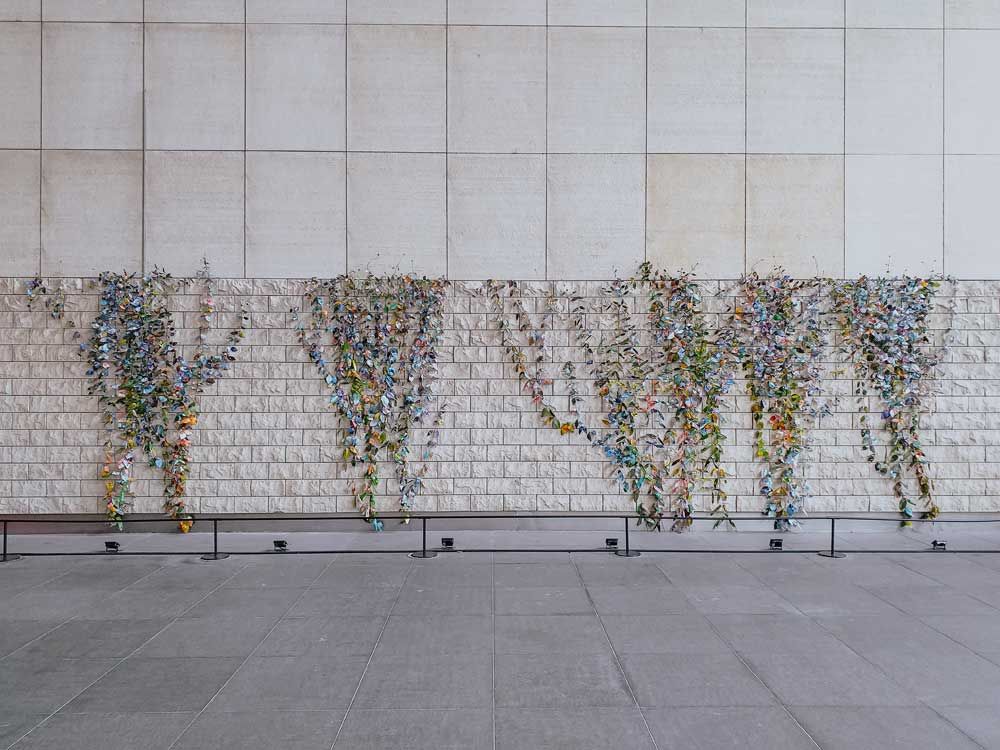
Here, Paphonsak transforms the traditional form of landscape painting into a medium for political discourse. Despite its theme, no anger is felt while experiencing this work. In its expected spot is an undercurrent of melancholy, the ache that comes with the tragedy of longing: a longing to be home.
________________________
Far From Home is on display as part of the Singapore Biennale 2019 (ongoing until 22 March 2020), at the National Gallery Singapore, the National Library plaza, and Gillman Barracks (Block 22).
